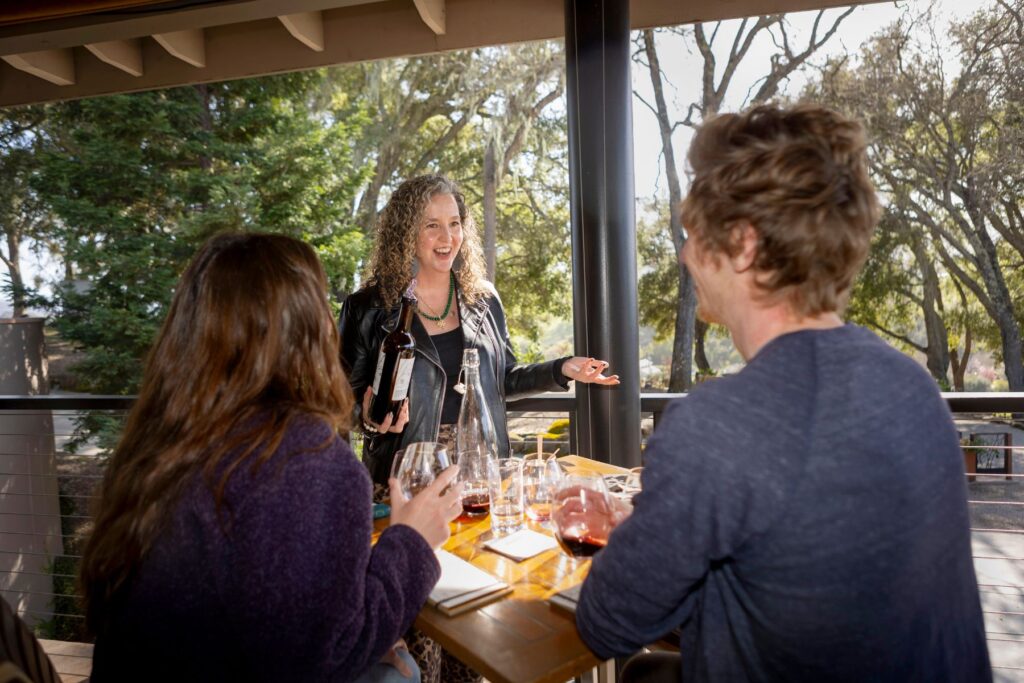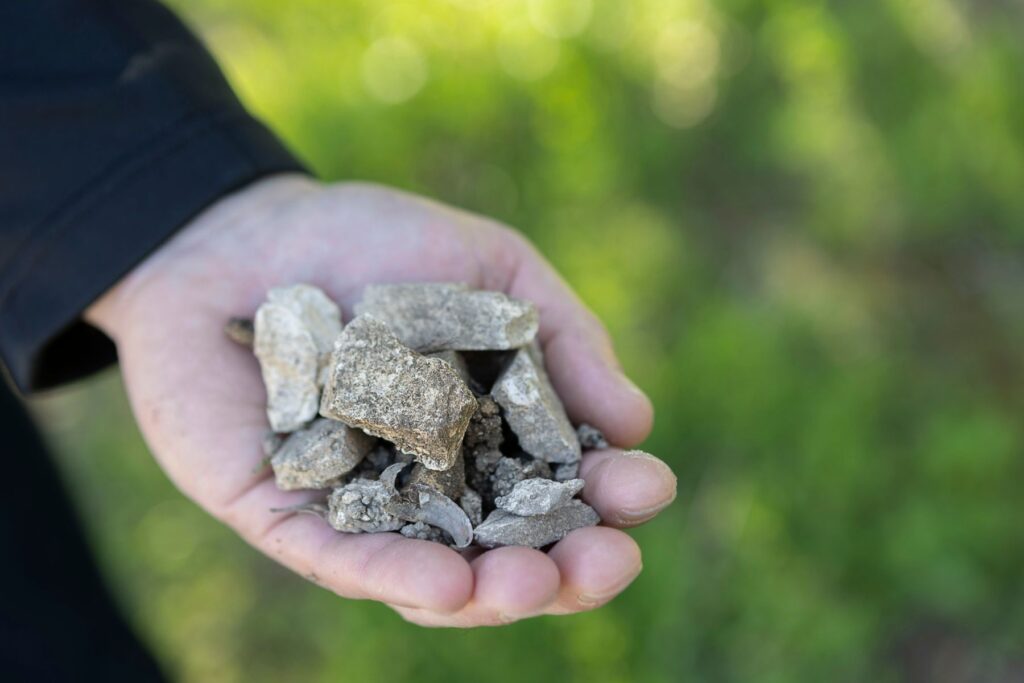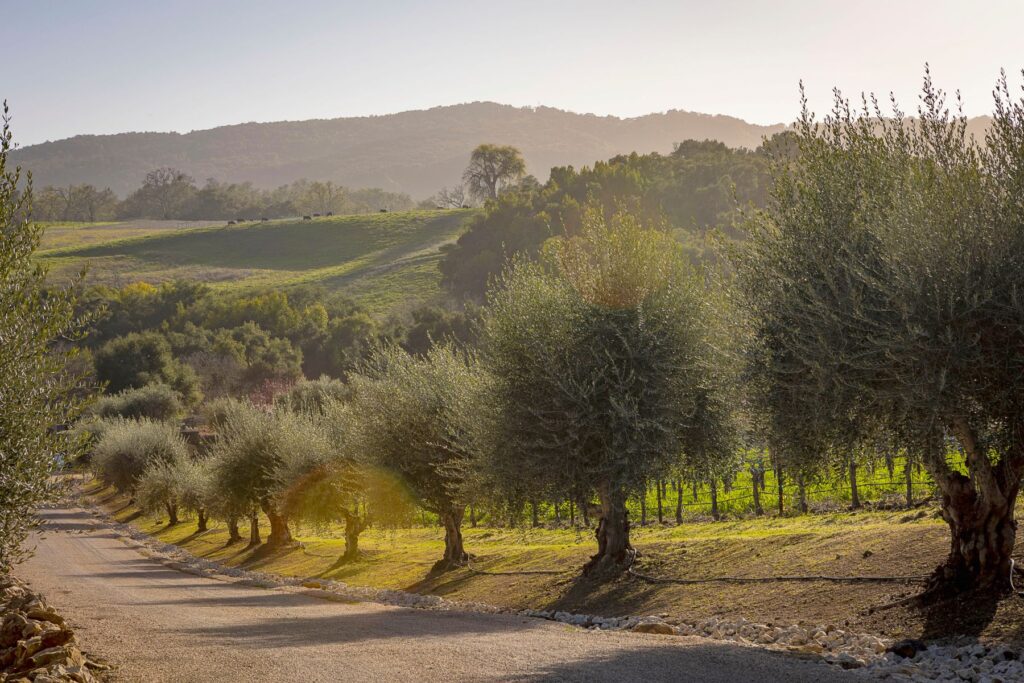
Water Management Creates Quality Wines at Jada Vineyard
Story by Aja Goare
Photography by Gennan Shippen
Turning water into wine is one of the hallmark miracles storied in the Bible. And that miracle, though by way of agricultural process instead of divinity, is happening across California. Research by the University of California, Davis found it takes about 300 gallons of water to make a single gallon of wine. Much of that water is used for irrigating the vineyard, which scales to about 108,000 gallons of water per acre of vines. That’s a lot of water in a state where drought looms like a dark cloud that neglects to release its contents.
H2O is a prized commodity at Jada Vineyard in Paso Robles, which has been organic certified for 10 years and certified sustainable since 2022. Water conservation is a natural component of its organic and sustainable farming practices. “Water management is a focus of organic farming, but organic doesn’t necessarily mean less water is used,” says Winemaker Nate Hall. “But we do focus on that.”
One such way they manage water use is through targeted deficit irrigation, supplying crops with less water during specific times of the growing season. The trick is to use less water but also maintain the crop output. “We measure water loss with a porometer, which is clipped to the leaf of a vine and tells us how much water is passing through it,” Nate explains. “With those readings, we can adjust.”
General Manager Josh Messina says the organic inputs used at Jada foster a healthier ecosystem where native plants, bugs and animals flourish. Surrounded by towering oak trees, the property works in partnership with — not against — Mother Nature. “For every new member of our wine club, we donate a tree through One Tree Planted,” Josh shares. As a benefactor for this nonprofit, Jada has planted over 100 million trees around the world, including hundreds in California where Jada’s donations are directed.
Supporting the environment isn’t a fruitless act of goodwill — Josh and Nate say healthy earth lends to better wine. “Farming organically requires more attention to detail,” says Josh. “We can’t just atom bomb drop fungicides on mildew; we have to be proactive and right on our timing. Inherently from this level of detail, our wine is higher quality.”
“And healthier soil retains water better,” adds Nate. “By not spraying herbicides to kill weeds and instead using cover crops, our site generally retains water well.”
Healthy soil is part of what keeps the Jada brand so strong, some 25 years after the land was purchased by Josh’s father, Jack, in 1999. The desire to own a vineyard was spurred by the family patriarch, Josh’s grandfather, an Italian immigrant who began making wine in his basement upon arriving in New York many decades ago. “My dad had such wonderful memories of visiting Italy and he wanted to recreate that rural life here in Paso Robles,” Josh explains. “Our wines are completely different from what my grandfather was making, but the winery is a reflection of my family’s history and the history of the winemaking here on this land.”
It’s the land that inspires Nate’s winemaking. “I want the wine to taste like it’s grown here — because it is,” says Nate, who worked at Jada as assistant winemaker for six years before taking over as head winemaker. “All but one of our wines are made with grapes from the estate. The microclimate and soil support a nice acidity in the wine. The flavor is big, structured, dark and balanced, soft and round.”
The winery only produces up to 4,000 cases annually and focuses on quality over quantity. Now under the ownership of the Riboli Family, fellow Italians, the winery has added a more robust white wine program to its existing Rhone and Bordeaux dominated red program. While visiting for a tasting, guests are invited to sip amid a 360-degree view of the vineyard in one of four tasting rooms. “They’re all centered in the middle of the vineyard, each named after the wooded area around us,” says Josh. “On one side is the oak grove, the other is the vineyard.”
At Jada, nature is never out of sight, both figuratively and literally. Farming of these nearly 60 acres of land is as much a lesson in sustainability as it is in winemaking.





